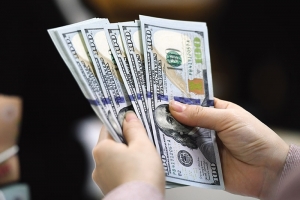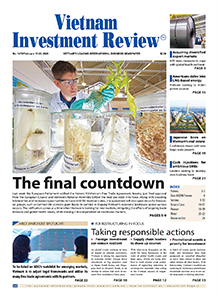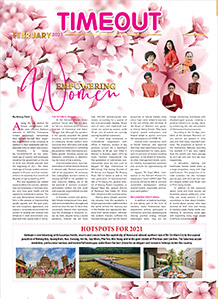Exchange rate surpasses VND25,800 as pressure builds
On March 25, the State Bank of Vietnam (SBV) announced the daily reference exchange rate at VND24,847 per dollar, up VND16 from the previous day. Since the start of the year, the reference rate has risen by VND512. With the current ±5 per cent trading band, the upper limit now stands at VND26,089 per dollar.
 |
| Photo: baodautu.vn |
At Vietcombank, the exchange rate on March 25 reached VND25,470 per dollar for interbank buying and VND25,830 for selling—an increase of VND70 compared to the end of last week. Most state-owned banks are quoting their selling rate between VND25,810 and VND25,826 per dollar, while private commercial banks list rates ranging from VND25,820 to VND25,825.
This trend coincides with the US Dollar Index (DXY) maintaining strong levels above 104 points. Global investors are closely monitoring US trade policies ahead of the April 2 deadline for reciprocal tariff measures. President Donald Trump has described this date as pivotal, marking the planned imposition of tariffs on all countries that levy duties on US goods.
In addition to external pressure from the dollar’s recovery, domestic foreign currency supply is also influencing exchange rate movements. According to Nguyen Duc Khang, head of research at Hanoi-based Pinetree Securities, the VND-USD selling rate set by the State Foreign Exchange Reserve Management Department hit a record high of VND26,003 per dollar at the end of last week, rising to VND26,022 at the start of this week.
“This suggests the SBV is intervening more actively to ease pressure on foreign exchange reserves after selling over $9 billion last year. Such actions may affect market sentiment, especially as foreign investors resumed net selling on the stock market last week,” Khang said.
Analysts point to the strengthening DXY and rising foreign currency demand in late March as key factors behind the current pressure. High import demand, particularly for production materials, has also contributed to fluctuations in Vietnam’s payment balance and foreign currency demand.
According to data from the General Department of Statistics released on March 6, Vietnam recorded a trade deficit of $1.55 billion in February—its first since May 2024. This brought the trade surplus for the first two months of 2025 to just $1.47 billion, sharply down from $5.13 billion in the same period last year.
The decline reflects falling exports amid rising imports, as businesses stockpile materials in anticipation of ongoing supply chain disruptions.
Exchange rate pressures are expected to continue into 2025, with the DXY remaining elevated and Trump’s tariff agenda increasing inflationary risks, prompting a more cautious stance from the US Federal Reserve on potential interest rate cuts.
 | Experts ponder exchange rate prospects for 2025 The VND-USD exchange rate has been fluctuating continuously throughout 2024, setting record highs in the final week of the year. The exchange rate pressure is expected to persist into 2025 as new variables come into play. |
 | Global economy set for moderate growth in 2025 amid rising geopolitical risks The global economy is expected to maintain moderate growth in 2025, but significant uncertainty looms, particularly regarding political and geopolitical developments. |
 | USD/VND gap fuels ongoing exchange rate pressure Exchange rate alterations are expected to remain complex for the rest of 2025. Associate director of Rates Trading at HSBC Vietnam Vu Binh Minh spoke with VIR’s Hong Dung about possible US Federal Reserve plans and resulting exchange rate pressures. |
What the stars mean:
★ Poor ★ ★ Promising ★★★ Good ★★★★ Very good ★★★★★ Exceptional
Related Contents
Latest News
More News
- Long-term capital seen as key hurdle to green growth (December 16, 2025 | 08:00)
- Gold prices swing amid tax debate and import uncertainty (December 15, 2025 | 18:04)
- Agribank frames bank credit as catalyst for green growth (December 15, 2025 | 17:59)
- Vietnam’s green transition demands collective financial action (December 15, 2025 | 12:00)
- VIR workshop highlights capital and policy for sustainable development (December 15, 2025 | 11:00)
- Promoting digital assets initiative in Vietnam (December 13, 2025 | 09:30)
- Experts flag gaps as national financial strategy under review (December 12, 2025 | 15:13)
- Global gold exchange models offer roadmap for Vietnamese market (December 12, 2025 | 11:58)
- Five million household businesses to adopt self-declared tax system (December 11, 2025 | 18:13)
- Vietnam establishes management board for crypto asset trading market (December 11, 2025 | 18:11)

 Tag:
Tag:




























 Mobile Version
Mobile Version